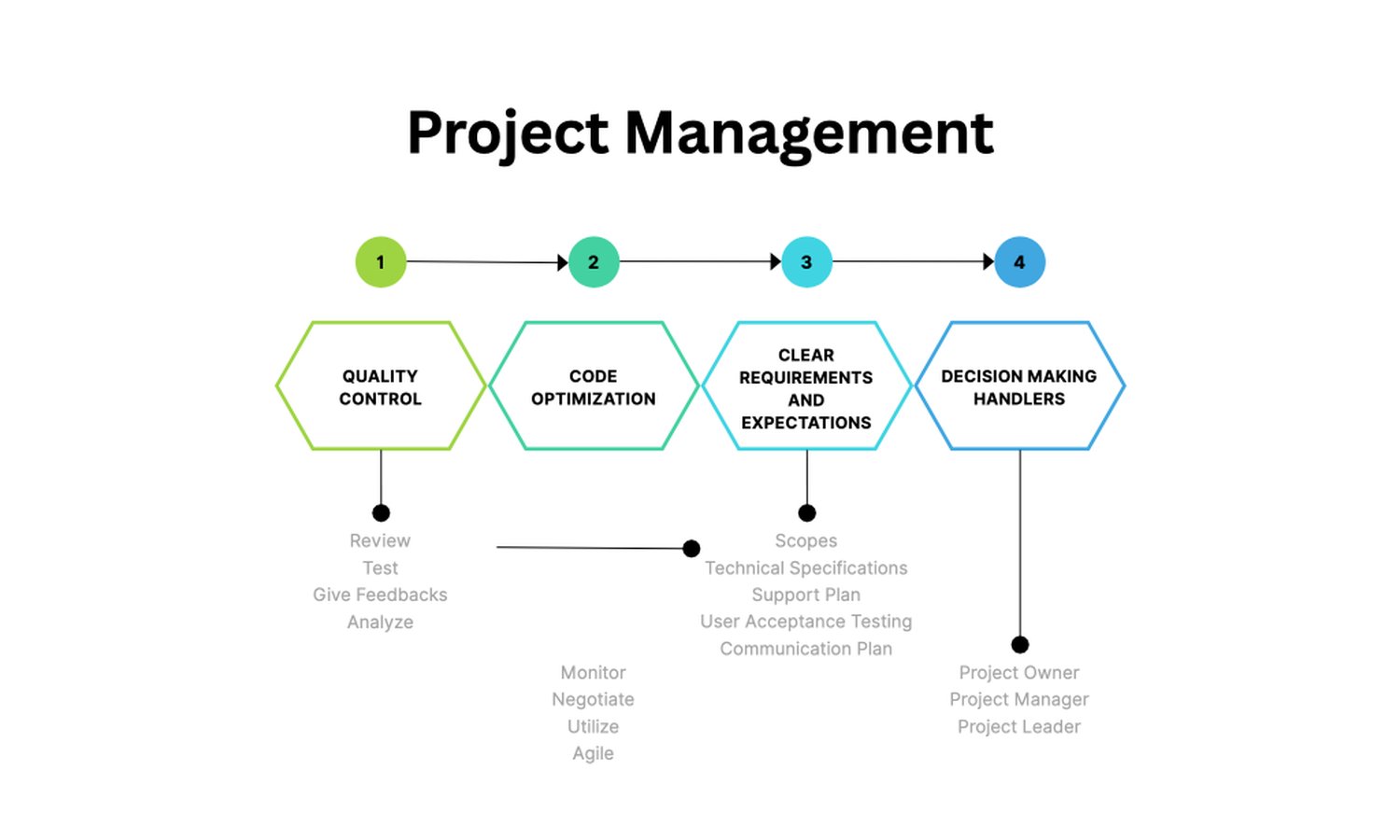Guidelines To Manage Success Outsourcing Software Development Project
By JoeVu, at: Feb. 15, 2023, 8:10 p.m.
Estimated Reading Time: __READING_TIME__ minutes


Outline
- Introduction
- Service Quality Control
- Cost Optimization
- Clear Requirements and Expectation
- Decision Making Handler
- Conclusion
Introduction
Outsourcing software projects are becoming increasingly popular as businesses look to leverage the expertise of third-party vendors. When done correctly, outsourcing can help companies maximize cost savings, streamline processes and improve overall service quality. This article will discuss how a successful outsourcing project was managed, focusing on key elements such as service quality control, cost optimization, clear requirements and expectations, and decision making handlers.
Service Quality Control
The key to a successful outsourcing project is to ensure service quality control. This involves setting clear expectations from the start, such as the quality of the work to be delivered, the turnaround time for the project, and the communication protocols to be followed. It is also important to review completed work and provide feedback in order to ensure that the vendor is meeting the required standards.
There are few tips that we can use
1. Automated Testing: Automated testing is a process used to verify that the software meets the required specifications and is free from errors. Automated tests can be written to test various aspects of the software, such as functionality, usability, and performance.
Tools: PlayWright, Selenium, Protractor, Appium.
2. Code Reviews: This process involves having experienced developers review the source code and make sure it meets the necessary standards.
Tools: Crucible, Phabricator, Code Climate
3. Code Refactoring: This technique is used to improve the structure and quality of code by making changes to the code base.
Tools: Stepsize, Eclipse IDE, Visual Studio IntelliCode.
4. Performance Testing: This process is used to measure the performance of the software. Performance tests can measure the speed, memory usage, and other aspects of the software.
Tools: JMeter, LoadRunner, WebLOAD.
5. Source Code Analysis: This method analyzes the source code and identify areas where improvements can be made.
Tools: SonarQube, CheckStyle, and FindBugs.
Cost Optimization
Another important factor in managing an outsourcing software project is cost optimization. This involves researching and comparing vendors to find the most suitable option, as well as negotiating pricing to ensure that the most cost-effective solution is chosen. Additionally, it is important to ensure that the vendor is able to deliver the project within the budgeted amount.
Lets follow some suggestions below:
1. Monitor and Analyze Your Current Software Development Process: Use tools like JIRA and Trello to monitor and analyze your current software development process and understand where potential cost savings can be made.
2. Utilize Automation: Utilize automated testing and deployment processes to minimize manual labor costs.
3. Negotiate with Vendors: Negotiate pricing with vendors to get the best rates.
4. Use Agile Methodology: Implement an agile methodology to increase the speed and cost-efficiency of software development.
Clear Requirements and Expectations
It is essential to ensure that the vendor understands the project requirements and expectations from the outset. This includes the scope of the project, the software and hardware requirements, and the timeline for completion. Establishing clear requirements and expectations will help ensure that the project is completed on time and to the desired quality.
1. Establishing clear project scopes, milestones and deadlines: This ensures that both parties are on the same page and that expectations are aligned.
2. Defining a detailed technical specification: The software development team should have a clear understanding of the required technology stack, data structure, and interface requirements.
3. Setting up user acceptance testing: Before the software is released, it is important to test the application and ensure that it meets the client's
expectations.
4. Defining a support plan: It is important to have a plan for the software development team to provide ongoing support for the software.
5. Establishing a communication plan: This helps ensure that both parties are on the same page and can discuss any issues that may arise during the development and implementation of the software.
Decision Making Handler
Having a decision making handler in place helps to streamline the process of communicating decisions and resolving conflicts. This handler should be knowledgeable about the project and have the authority to make decisions on behalf of the company. This will ensure that the project is completed in a timely and efficient manner.
1. Assign the Project Owner, Leader and Developer roles
2. Utilizing a decision-making framework such as the Six Thinking Hats or the Pros and Cons Method.
3. Scheduling regular meetings with the software development team to discuss progress and any potential changes.
4. Utilizing communication platforms such as Slack or Skype to facilitate quick decision-making.
Conclusion
Outsourcing software projects can have numerous benefits for businesses, but it is important to manage them carefully in order to ensure success. By focusing on service quality control, cost optimization, clear requirements and expectations, and decision making handlers, companies can ensure that their software project is completed on time and to the desired quality.





